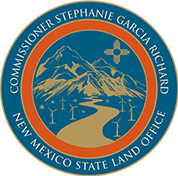Announcements
Do you need some help?
The quickest way to reach us is to contact us through the contact form on the website.
Address:
310 Old Santa Fe Trail,
Santa Fe NM 87501
Phone:
505-827-5760
Check this page periodically to see any new announcements that the State Land Office wants you to know about!
Land Sale Auction LE-1423
Bid Packet for Proposed Planning Development Least in Las Cruces East Mesa Area
The New Mexico Commissioner of Public Lands will accept sealed bids for a proposed Planning and Development Lease, BL-3020, on about 460 acres of state trust land in the East Mesa area in Las Cruces. Please fill out the form below to download the bid packet for...
Notice of Public Meeting – Proposed Planning Development Lease in the East Mesa of Las Cruces – Las Cruces – May 12, 2025
STATE LAND OFFICE Notice of Public Meeting to Receive Public Comment Regarding Proposed Planning and Development Lease Lease No. BL-3020 The New Mexico State Land Office (“SLO”) will hold a public meeting at the Doña Ana County Building, 845 N Motel Blvd., Las Cruces,...
Notice of Public Meeting – Proposed Sale of State Trust Lands in Lea County – Hobbs, May 20, 2025
STATE LAND OFFICE Notice of Public Meeting to Receive Public Comment Regarding Proposed Sale of State Trust Lands Land Sale No. LE-1423 The New Mexico State Land Office (“SLO”) gives notice in accordance with NMSA 1978, Section 19-7-9.1 that it will hold a public...
Request for Proposals (RFP): Online Auction Services for State Trust Lands Lease Sales
PURPOSE OF THIS REQUEST FOR PROPOSALS (RFP)The New Mexico State Land Office is soliciting sealed proposals to establish a contract through competitive negotiations for the procurement of internet-based auctioneer services for the New Mexico State Land Office’s (NMSLO)...
